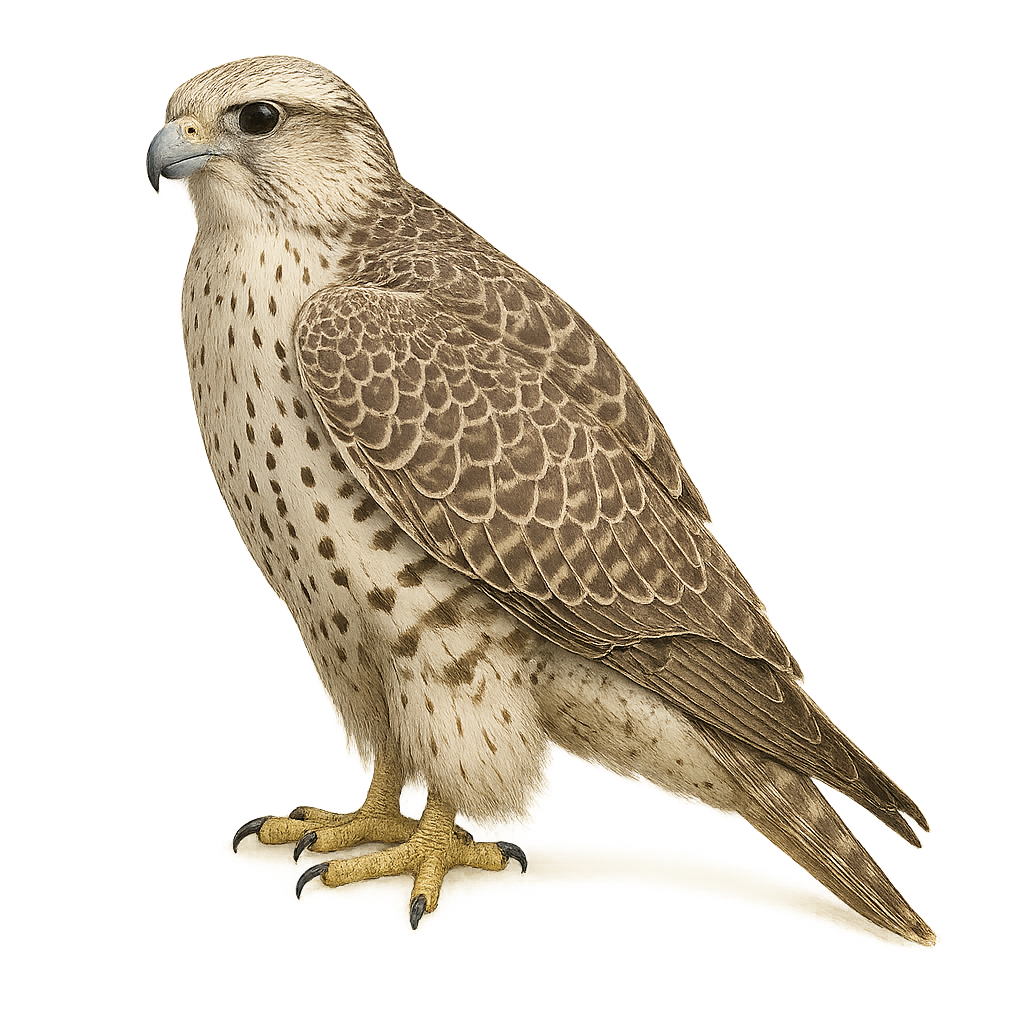Your wildlife photography guide.
Explore the gyrfalcon in detail, study its behavior, prepare your shots.
Where to observe and photograph the gyrfalcon in the wild
Learn where and when to spot the gyrfalcon in the wild, how to identify the species based on distinctive features, and what natural environments it inhabits. The WildlifePhotographer app offers tailored photography tips that reflect the gyrfalcon’s behavior, helping you capture better wildlife images. Explore the full species profile for key information including description, habitat, active periods, and approach techniques.
Gyrfalcon
Scientific name: Falco rusticolus

IUCN Status: Least Concern
Family: FALCONIDAE
Group: Birds
Sensitivity to human approach: Suspicious
Minimum approach distance: 50 m
Courtship display: March to May
Incubation: 34-36 jours
Hatchings: April to June
Habitat:
Arctic tundra
Activity period :
Primarily active during the day, with peak activity in the morning and late afternoon.
Identification and description:
The gyrfalcon, or Falco rusticolus, is the largest of the falcons, known for its robustness and ability to survive in harsh Arctic environments. Its impressive size, with a wingspan reaching up to 160 cm, and its variable plumage ranging from pure white to dark grey, make it a spectacular bird. It is primarily found in circumpolar regions, nesting on cliffs and isolated mountains. A formidable predator, it mainly hunts medium-sized birds such as ptarmigans and ducks. The gyrfalcon is a symbol of power and majesty in many Nordic cultures. Its population is stable, although locally threatened by climate change and human disturbance.
Recommended lens:
400 mm – adjust based on distance, desired framing (portrait or habitat), and approach conditions.
Photography tips:
To photograph the gyrfalcon, it's essential to respect its safety distance to avoid disturbing it. Use a telephoto lens of at least 400 mm to capture detailed images without getting too close. The best photography opportunities often occur early in the morning or late in the afternoon when the light is soft and the bird is active. Be patient and discreet, wearing neutral-colored clothing to blend into the environment. A tripod can be useful for stabilizing your camera during long-distance shots.
The WildlifePhotographer App is coming soon!
Be the first to explore the best nature spots, track rutting seasons, log your observations, and observe more wildlife.
Already 1 439 wildlife lovers subscribed worldwide

